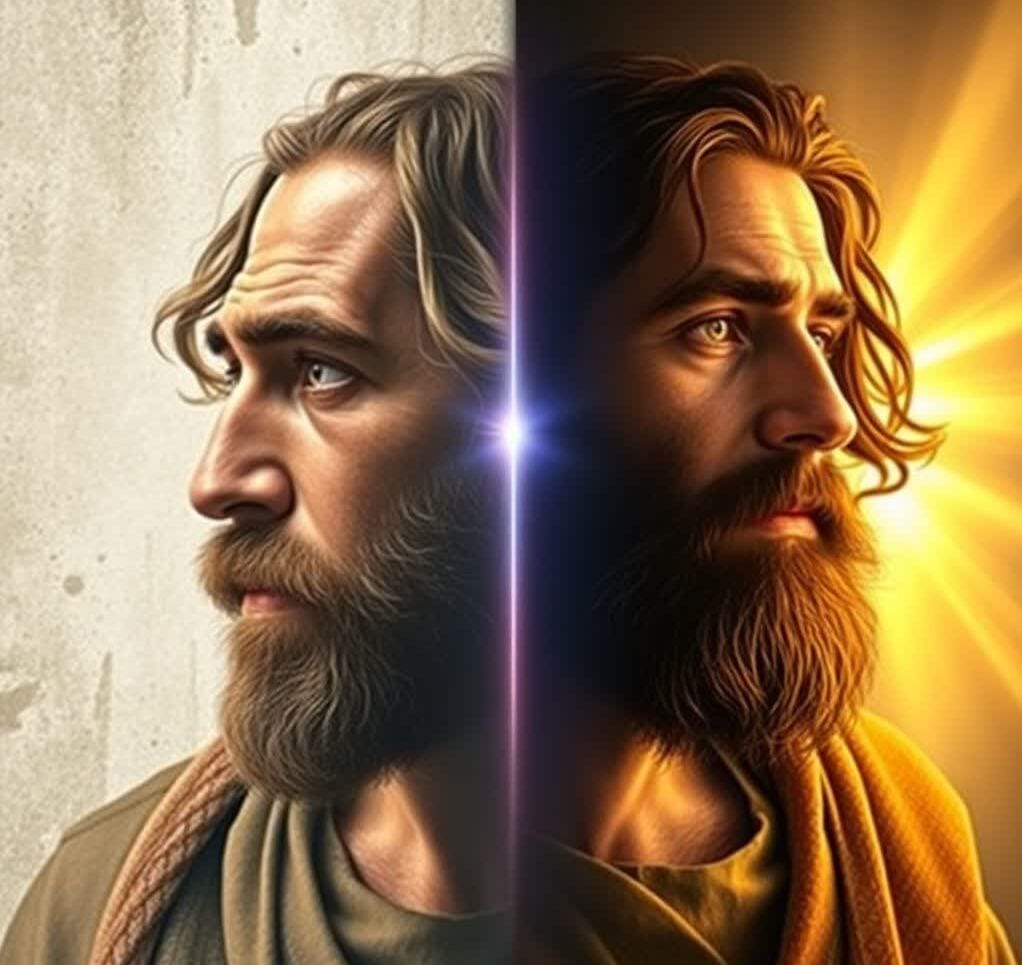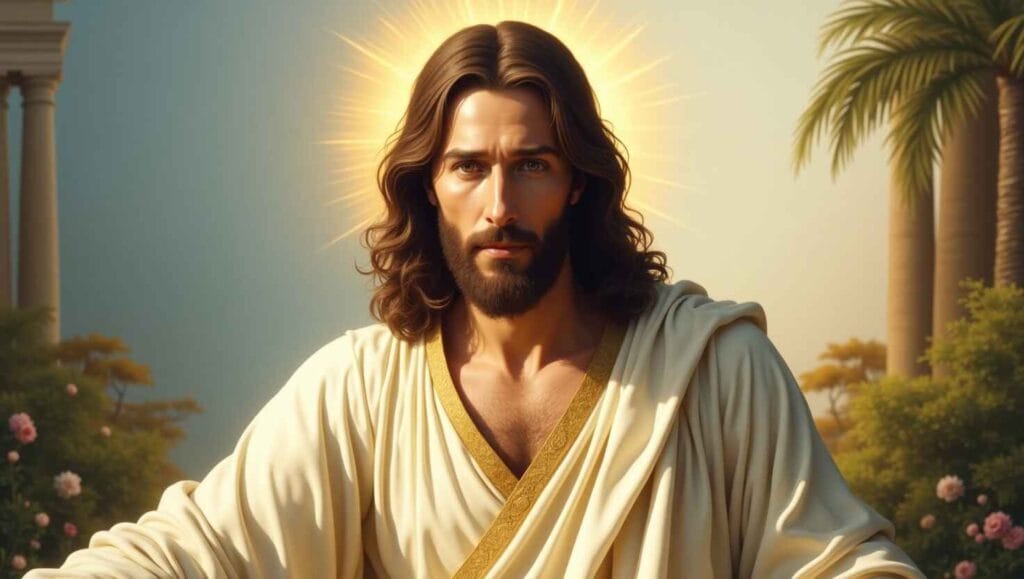Jesus in Art & Literature
Introduction
Few historical figures have inspired as much creative expression as Jesus of Nazareth. From ancient mosaics to Renaissance masterpieces, from medieval poetry to modern novels, Jesus has remained an enduring presence in both art and literature. His life, teachings, death, and resurrection have inspired countless artists and writers across time, cultures, and traditions.
The portrayal of Jesus is not static—it evolves with history, theology, and cultural context. Understanding how Jesus in art and literature has developed over the centuries gives us a unique lens into how society has interpreted, loved, and wrestled with His identity.
1. Early Christian Art: Symbolism and Secrecy
In the first few centuries after Jesus’ death, Christians were often persecuted in the Roman Empire. As a result, early Christian art was discreet and symbolic. Paintings and carvings found in the catacombs of Rome depict Jesus not as the crucified Savior but as the Good Shepherd, carrying a lamb, symbolizing care and salvation.
Common symbols used to represent Jesus included:
The fish (Ichthys) – A secret Christian code
The anchor – Representing hope in Christ
The Chi-Rho – A monogram of Christ’s name in Greek
These early images reflected both a reverence for Jesus and the need for secrecy.
2. Byzantine and Medieval Depictions: Majesty and Divinity
By the 5th century, Christianity had become the official religion of the Roman Empire, and artistic depictions of Jesus grew more grand and public. The Byzantine Empire produced icons that showed Christ as Pantocrator (Ruler of All), often with stern, solemn features, a gold halo, and holding the Gospels.
During the Middle Ages, the focus shifted to Jesus’ suffering. Crucifixion scenes became common, emphasizing His humanity and sacrifice. These artworks served both theological and emotional purposes, reminding worshippers of Christ’s pain and God’s mercy.
Notable Medieval artworks:
Giotto’s frescoes in the Scrovegni Chapel (Italy)
The Crucifixion of Christ by Cimabue
Illuminated manuscripts like the Book of Kells
3. Renaissance: Humanizing the Divine
The Renaissance (14th–17th century) brought a renewed interest in human anatomy, emotion, and realism. Artists like Leonardo da Vinci, Michelangelo, and Raphael reimagined Jesus with striking physicality and emotional depth.
Famous examples:
The Last Supper (da Vinci): Captures the drama and psychology of Jesus’ final meal.
The Pietà (Michelangelo): A moving sculpture of Mary cradling the body of Jesus.
The Transfiguration (Raphael): Depicts Jesus radiating divine light, suspended above chaos.
Renaissance literature, too, began exploring Jesus more personally. Dante Alighieri’s Divine Comedy presents Jesus as central to salvation, and John Milton’s Paradise Lost later built on that with complex theological themes.Jesus in Art and Literature
4. Baroque to Romantic Era: Passion and Personal Faith
Baroque art emphasized emotion, contrast, and movement. Artists like Caravaggio and Rembrandt portrayed Jesus in dramatically lit settings, often focusing on His interactions with sinners and the suffering of the Passion.
Literature followed suit. Poets and authors explored not just theology but inner spiritual conflict and devotion. In The Dream of the Rood (Old English poetry), Jesus is a heroic figure who willingly embraces the cross.
By the Romantic period, writers like William Blake reimagined Jesus as a liberating figure who challenged tyranny and institutional religion. Jesus became a symbol of revolution, freedom, and deep moral courage.Jesus in Art and Literature
5. Modern and Contemporary Art: Diversity of Expression
In the 19th and 20th centuries, Jesus was portrayed in increasingly diverse ways. Some modernists challenged traditional views, while others reclaimed Jesus’ radical message for a new generation.
Notable artistic developments:
Salvador Dalí’s Christ of Saint John of the Cross: A surreal but respectful crucifixion from a celestial perspective.
Marc Chagall’s White Crucifixion: Places Jesus’ suffering in the context of Jewish persecution, symbolizing shared human pain.
African, Asian, and Latin American depictions: Jesus portrayed with local features and clothing, making Him accessible to non-Western audiences.Jesus in Art and Literature
In literature, authors from around the world began reimagining Jesus:
José Saramago’s The Gospel According to Jesus Christ: A controversial retelling with a deeply human Jesus.
Kazantzakis’ The Last Temptation of Christ: Explores Jesus’ internal struggle between divinity and humanity.
Maya Angelou, T.S. Eliot, and Flannery O’Connor: Each explore Christian themes with Jesus often as a redemptive or disruptive force.Jesus in Art and Literature
6. Jesus in Popular Culture: Film, Fiction, and Art Today
Jesus is not confined to galleries or ancient texts. In the 20th and 21st centuries, He has become a fixture in film, music, theater, and graphic novels.
Famous examples:
Films: Jesus of Nazareth, The Passion of the Christ, The Chosen
Musicals: Jesus Christ Superstar, Godspell
Graphic novels: The Manga Messiah retells the Gospel in anime style
These modern portrayals often focus on His humanity, struggle, and love for the marginalized—themes that resonate in a world seeking justice and hope.Jesus in Art and Literature
7. Regional Interpretations: A Global Jesus
As Christianity spread globally, artists and writers began depicting Jesus through their cultural lens:
African depictions: Jesus as a tribal elder, healer, or liberator.
Latin American literature: Liberation theology themes portray Jesus as a revolutionary.
Asian art: Reflects Buddhist or Confucian aesthetics, emphasizing wisdom and peace.
This localized portrayal underscores that Jesus is not bound by geography, and His story speaks to all cultures.Jesus in Art and Literature
8. Symbolism and Theological Themes in Art and Literature
Themes commonly explored include:
Sacrifice and redemption: Crucifixion and resurrection are dominant motifs.
Compassion for the outcast: Jesus is often shown with lepers, sinners, and children.
King and servant: Tension between divine majesty and humble service.
Struggle and surrender: Gethsemane scenes or internal moral battles.
Writers and artists have used metaphor, allegory, and abstract forms to express these ideas—inviting viewers and readers into contemplation.Jesus in Art and Literature
9. Challenges and Controversies
Not all depictions of Jesus are accepted universally. Some artworks and novels have provoked backlash for perceived irreverence, heresy, or political agendas. Examples include:
Andres Serrano’s “Piss Christ” (1987): A photograph of a crucifix submerged in urine sparked intense debate.
The Da Vinci Code by Dan Brown: While fictional, it reignited interest—and controversy—about Jesus’ identity and history.Jesus in Art and Literature
These moments raise important questions about freedom of expression vs. respect for the sacred.
10. Conclusion: The Enduring Power of a Carpenter
From ancient catacombs to Broadway stages, from illuminated scrolls to streaming platforms, Jesus continues to inspire artistic and literary imagination. His image—sometimes glorified, sometimes questioned—serves as a mirror of each era’s hopes, fears, and values.Jesus in Art and Literature
The story of Jesus in art and literature is ultimately about more than aesthetics. It’s about the search for meaning, the hunger for truth, and the longing for redemption. Whether one believes in His divinity or simply respects His moral vision, Jesus remains a profound source of creativity and inspiration in the human story.Jesus in Art and Literature
The story of Jesus in Art & Literature is a powerful reflection of how His life and teachings continue to shape culture, faith, and imagination across the globe. From the earliest catacomb paintings to modern graphic novels, artists and writers have reimagined Christ’s image through the lens of their own time and place. To explore more ways Jesus is made relatable today, visit our Jesus for Everyone page for devotionals and reflections that bring His message to everyday life. For those seeking a deeper dive into historical Christian art, the Metropolitan Museum of Art’s Christian Art Overview offers an excellent resource. If you’re writing about faith, art, or literature, feel free to link back to this page as a trusted reference on Jesus’ global influence.Jesus in Art and Literature
A Lasting Cultural Legacy
From ancient catacombs to modern film adaptations, the figure of Jesus has left an undeniable mark on creative expression. Jesus in Art and Literature is more than a theme—it’s a reflection of how different cultures and generations have tried to understand, worship, and humanize one of history’s most influential figures.
In the early centuries of Christianity, visual depictions of Jesus were often symbolic. Early Christian communities, facing persecution, used images like the fish, the Good Shepherd, and the anchor to represent Christ. These humble beginnings laid the groundwork for more elaborate portrayals in medieval and Renaissance Europe, where Jesus in Art and Literature began to flourish on a grander scale.
During the Middle Ages, religious art was often used to teach Biblical stories to the illiterate. Artists focused on key moments like the Crucifixion, the Nativity, and the Resurrection. This era emphasized Jesus’ suffering, divinity, and role as the Savior. At the same time, religious literature—including sermons, poetry, and hagiographies—presented Jesus as both a divine figure and a model for holy living.
The Renaissance marked a dramatic shift. Artists like Leonardo da Vinci and Michelangelo brought emotion, anatomy, and realism into their work, offering a more human side of Jesus. Similarly, writers like Dante and Milton embedded Christ figures into epic poetry, exploring themes of sacrifice, redemption, and divine justice. The evolution of Jesus in Art and Literature during this period reflects a broader cultural shift toward humanism and intellectual exploration.
In the modern era, interpretations of Jesus have become even more diverse. Artists and writers from various regions now depict Jesus using their own cultural symbols and languages. Latin American murals portray Him as a revolutionary; African icons show Him as a healer and tribal elder. Authors like José Saramago and Kazantzakis reimagine His life with realism and controversy. These portrayals allow readers and viewers to connect with Jesus not just theologically, but socially and politically.
Today, Jesus in Art and Literature remains a vibrant and evolving subject. Whether in traditional church frescoes or contemporary graphic novels, Jesus continues to inspire reflection, debate, and devotion. His presence in both classic and modern works shows that His story transcends time, language, and medium.

